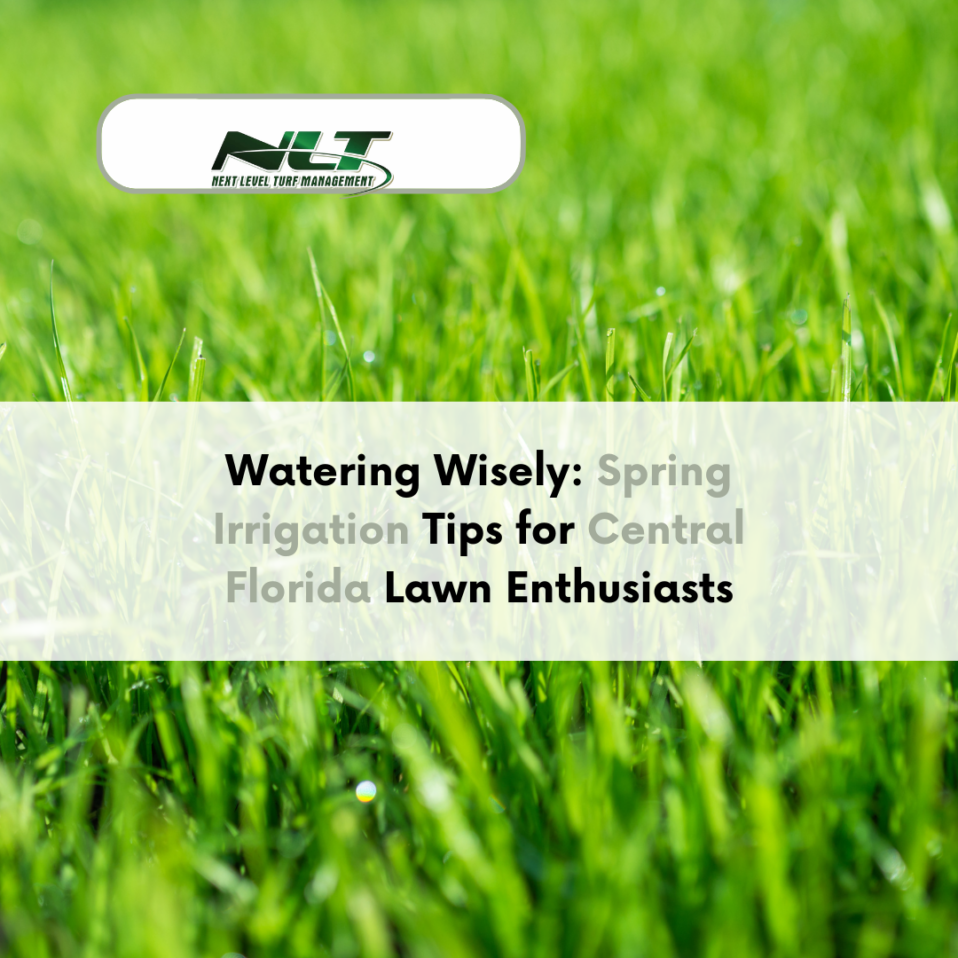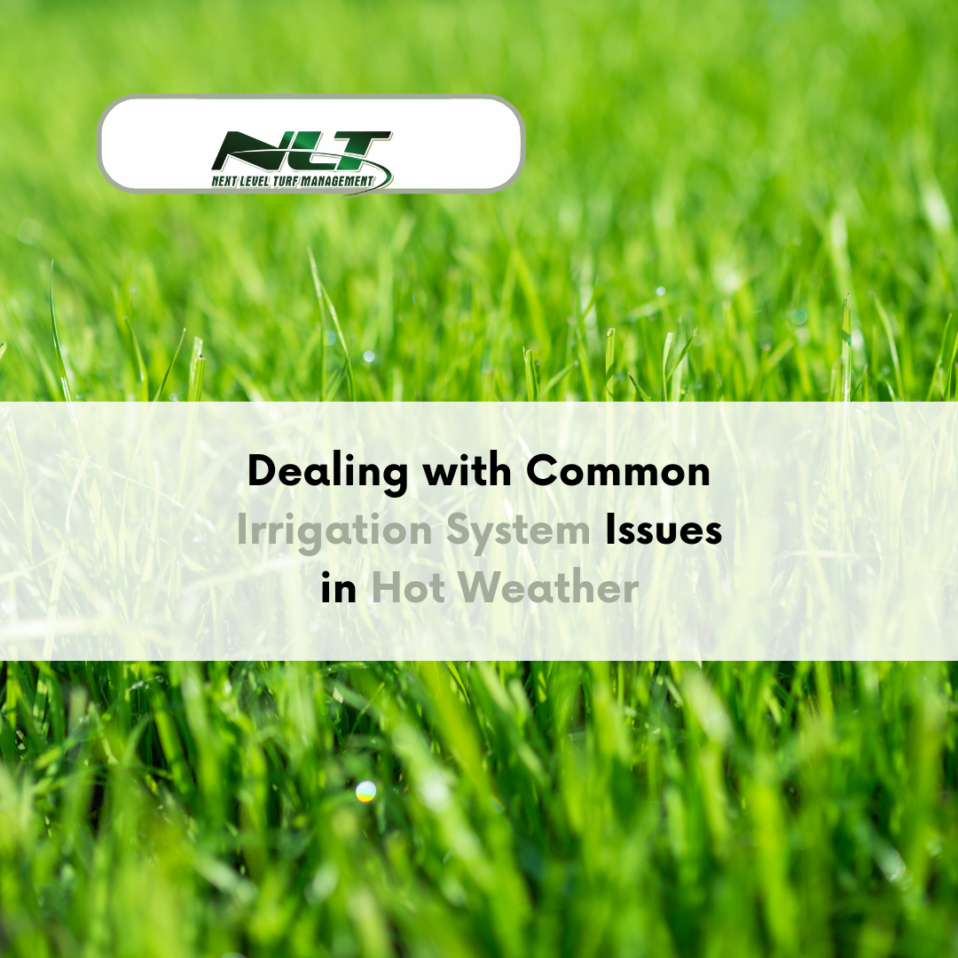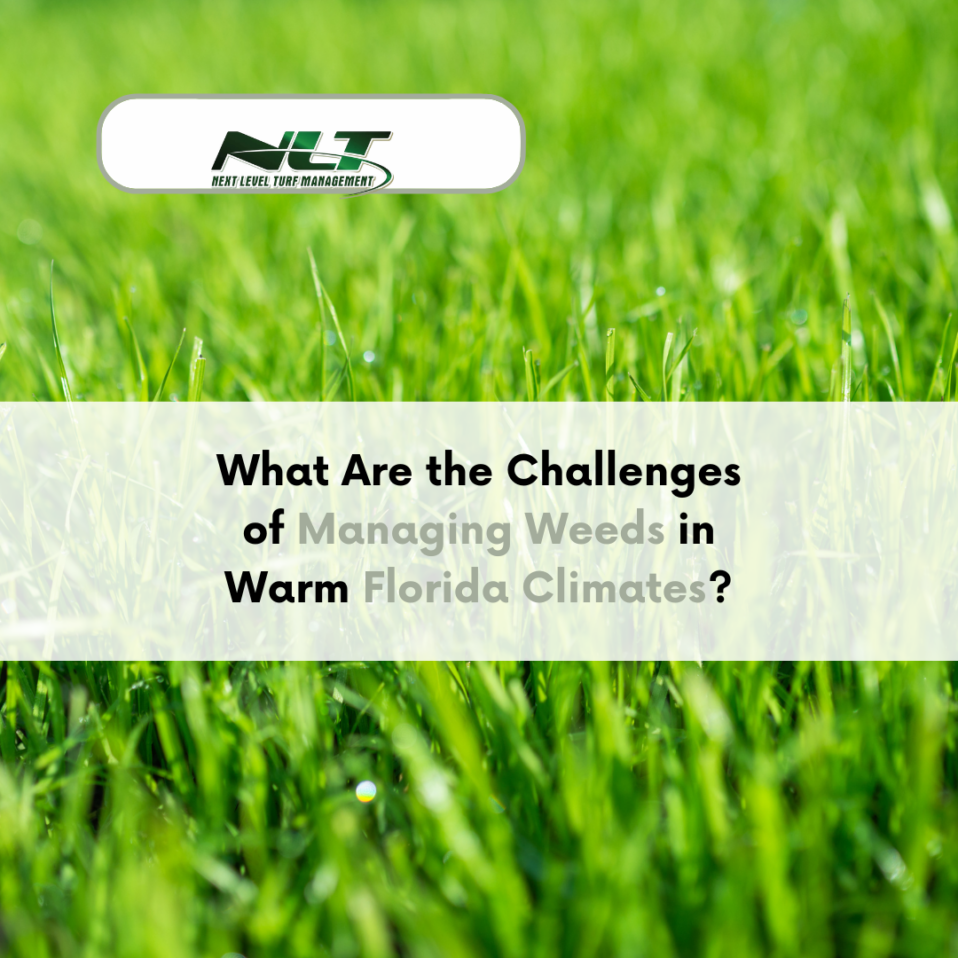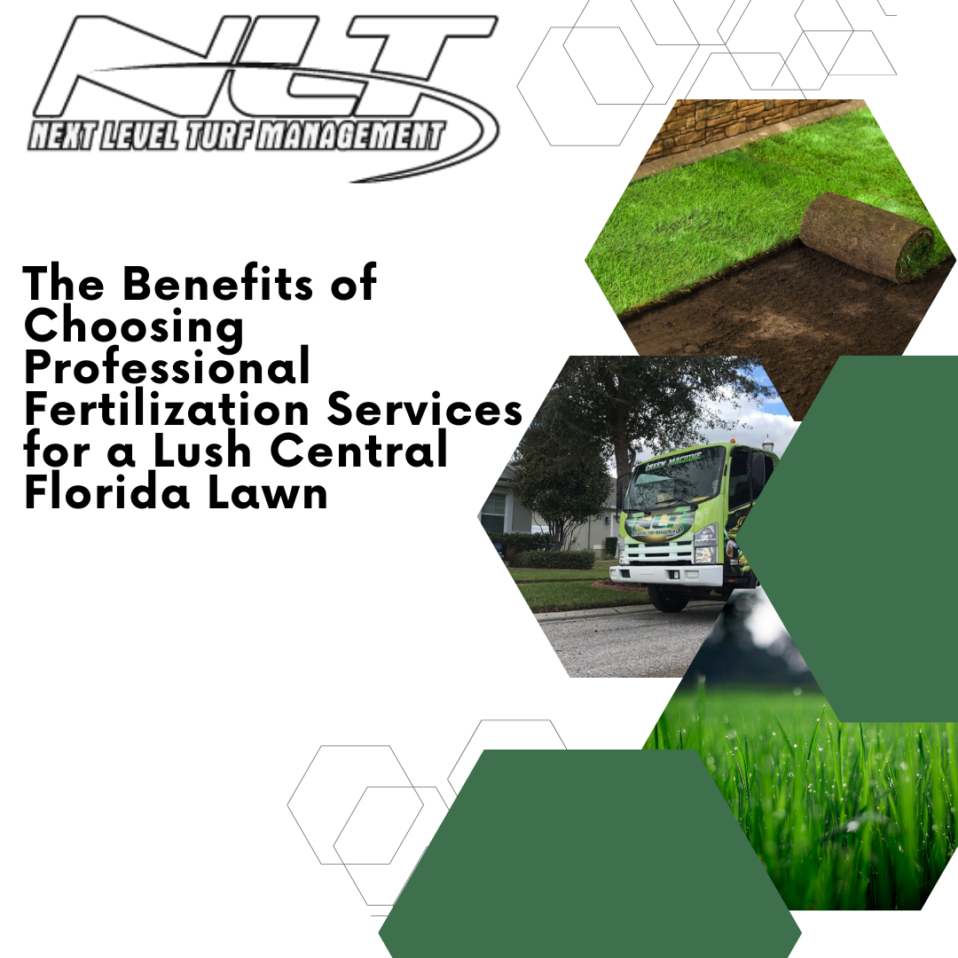As a Central Florida homeowner, creating a lush, green lawn is a source of pride and a hallmark of a well-maintained property. But, in a region where water conservation is a crucial consideration, striking the right balance between irrigation needs and sustainable water usage can be challenging. This is where Next Level Turf, Central Florida’s Premier Turf Management Company, provides valuable guidance and support.
Today, we’ll share essential tips and best practices to maintain a thriving lawn while conserving water resources. We’ll dive into optimizing your irrigation system and the benefits of partnering with professional lawn care and irrigation service providers like Next Level Turf.
As spring rolls in, it’s the perfect time to reassess your lawn care and irrigation practices and adapt them to the unique challenges of Central Florida’s climate. Armed with the knowledge and strategies laid out in this guide, you can confidently tackle your landscape’s watering needs while responsibly preserving valuable water resources.
So, let’s get started on your journey to a more sustainable and beautiful lawn by exploring the expert spring irrigation tips and best practices provided by Next Level Turf, the leading authority in Central Florida turf management.
Understanding Central Florida’s Unique Watering Needs
To develop an effective watering strategy for your Central Florida lawn in the spring, it’s essential first to understand the unique environmental factors affecting the region. Central Florida’s climate, characterized by hot temperatures and frequent rainstorms during the warmer months, makes water management critical for homeowners seeking to maintain a healthy lawn. Some key factors to consider include:
- Evapotranspiration Rate: The evapotranspiration rate, or the rate at which water is transferred from the land to the atmosphere through evaporation and plant transpiration, is an essential factor in determining irrigation needs. To effectively water your lawn, you must replace the moisture lost through evapotranspiration. For Central Florida, this rate tends to be higher due to the area’s warm temperatures and humid conditions.
- Soil Type: Central Florida soils are predominantly sandy, which means they drain water more quickly than clay or loamy soils found in other regions. Understanding this characteristic is critical when determining appropriate watering frequency and duration to prevent over- or under-watering.
- Seasonal Rainfall Patterns: Central Florida experiences regular rainfall throughout the spring and summer months, which can significantly impact your irrigation schedule. It’s crucial to account for natural precipitation levels to avoid wasting water and potentially harming your lawn through overwatering. Weather monitoring tools and devices can assist in making informed decisions about adjusting your watering schedule based on rainfall patterns.
Creating an Efficient Irrigation System
Optimizing your irrigation system for maximum water efficiency is an essential component of responsible lawn care in Central Florida. The following steps will help you create and maintain an irrigation system that minimizes water waste while effectively nurturing your lawn:
- Choose an Appropriate Sprinkler System: Selecting the right sprinkler system can significantly influence the overall efficiency and effectiveness of your irrigation. Drip and soaker hose systems are useful for conserving water by applying it directly to plant roots while decreasing evaporation. For lawns, using a combination of rotors and spray heads (matched precipitation rate sprinkler heads) ensures even water distribution across the entire area.
- Schedule Watering Times Strategically: To avoid unnecessary evaporation and make the most of your irrigation efforts, water your lawn early in the morning or late in the afternoon when the sun’s intensity is low. Avoid watering during windy conditions and be mindful of local watering restrictions that may be in place during periods of drought.
- Monitor and Maintain the System Regularly: Keeping up with regular maintenance tasks, such as checking for leaks and adjusting sprinkler heads for optimal coverage, is crucial for ensuring your irrigation system operates efficiently. Inspect and clean filters, screens, and nozzles regularly to avoid clogging and system inefficiencies.
- Implement Smart Irrigation Technologies: Integrating smart controllers and soil moisture sensors into your system can help optimize your irrigation schedule based on real-time data and local weather conditions. These devices can significantly improve water-use efficiency and support a healthier lawn with minimal effort.
Developing a Water-Wise Lawn Care Routine
Beyond optimizing your irrigation system, adopting water-wise lawn care practices can help improve the overall health and resilience of your lawn while conserving precious water resources. Consider implementing the following strategies:
- Mowing Techniques: Regular mowing at the appropriate height can significantly impact your lawn’s water requirements. For most turfgrass types in Central Florida, maintaining a height of 3 to 4 inches is ideal. Mowing at this height encourages deeper root growth, increasing the lawn’s ability to access and retain water. Additionally, be sure to keep mower blades sharp, as cleaner cuts result in less water loss.
- Aerating Your Lawn: Compacted soil can impede water penetration and lead to runoff and increased evaporation. Annual lawn aeration helps loosen the soil, allowing water, nutrients, and oxygen to penetrate deeper and promoting healthier root systems. This, in turn, makes your lawn more resilient and water-efficient.
- Utilizing Organic Top Dressing: Adding a thin layer of organic material, such as compost, peat moss, or aged manure, to your lawn’s surface can help improve nutrient retention and water-holding capacity. This practice can be particularly beneficial for Central Florida’s sandy soils, which tend to drain water quickly.
- Incorporating Drought-Tolerant Grasses: Choose a drought-tolerant grass variety suited to Central Florida’s climate. Bahiagrass, Bermuda grass, and Zoysia grass are examples of drought-tolerant species that can thrive under the region’s environmental conditions. This can significantly reduce your lawn’s water requirements and improve its resilience in periods of drought.
Fertilizing Effectively and Responsibly
An essential aspect of maintaining a healthy Central Florida lawn involves proper fertilization techniques that promote the vitality of your landscape while minimizing environmental impact. Apply the following responsible fertilizing practices to ensure a thriving, water-efficient lawn:
- Time Your Fertilization: Fertilizing at the right time is crucial for lawn health and responsible nutrient management. In Central Florida, early spring and late fall are ideal times for most turfgrass types. Avoid heavy fertilization during the hottest months, as this can lead to increased water requirements and nutrient runoff.
- Understand the Nutrient Requirements: Not every lawn is the same, so understanding the specific nutrient needs of your grass type helps avoid over-fertilizing. Conducting a soil test will provide insight into your lawn’s nutrient needs and inform your fertilizer selection.
- Select the Appropriate Fertilizer: Choose fertilizers that contain slow-release nitrogen and micronutrients suited to your lawn’s specific requirements. By opting for slow-release formulations, you support a more sustainable and steady nutrient supply for your grass while minimizing the risk of nutrient leaching and runoff.
- Follow Proper Application Techniques: Over- or under-applying fertilizer can negatively impact your lawn’s water use and overall health. Use a calibrated spreader to ensure the even distribution of fertilizer and water-in fertilizers according to the manufacturer’s instructions. This will promote proper absorption and reduce the risk of nutrient pollution.
Comprehending Local Water Restrictions
Understanding and complying with local watering restrictions is a crucial aspect of responsible lawn care in Central Florida. As drought conditions and water conservation concerns continue to grow, various restrictions and guidelines are established to help manage water resources more sustainably.
- Stay Informed: Familiarize yourself with your local water management district’s guidelines regarding watering frequency, duration, and time of day. These guidelines may change seasonally or in response to drought conditions and must be considered when planning your irrigation schedule.
- Obey the Rules: Strictly adhere to the established watering restrictions and guidelines, as penalties may apply for non-compliance. More importantly, abiding by these rules aids in conserving valuable water resources and helps to maintain a healthy, sustainable environment.
- Adjust Your Watering Schedule: Adjust your irrigation schedule to coincide with the approved watering days and times established by your local water management district. This may involve modifying your irrigation controller and ensuring multiple zones are watered within the permissible watering window.
Managing Lawn Pests and Diseases Responsibly
Pests and diseases can also impact the health and water efficiency of your Central Florida lawn. By utilizing sustainable pest management practices and detecting problems early, you can minimize water waste and maintain a vibrant lawn. Take these steps to manage pests and diseases responsibly:
- Monitor Your Lawn Regularly: Keep an eye out for signs of pests or diseases that may be affecting the health of your turfgrass. Regular inspection helps detect and address issues promptly, minimizing the need for chemical treatments and supporting a water-efficient lawn.
- Implement Integrated Pest Management (IPM) Practices: IPM involves utilizing a combination of biological, cultural, and chemical controls to manage pests with minimal environmental impact. By focusing on preventive measures and favoring non-chemical solutions when possible, you foster a healthier, more water-efficient lawn.
- Know Your Treatment Options: In case of pest or disease infestations, consider the least impactful treatment options first. Avoid using broad-spectrum pesticides and instead opt for targeted treatments designed specifically for the pest or disease in question. Always follow the label instructions when applying treatments to minimize environmental harm.
- Help Your Lawn Recover: After treating a pest or disease problem, ensure proper lawn care practices are in place to help your turfgrass recover. This may involve adjusting your watering frequency, mowing height, or fertilization regimen depending on the grass type and the specific issue encountered.
Maximizing Lawn Health During Drought Conditions
Periods of water scarcity and drought can severely impact the health of your Central Florida lawn. By employing practical lawn care techniques during these times, you can ensure the survival and resilience of your landscape and make responsible use of limited water resources.
- Adjust Your Irrigation System: During drought conditions, your top priority must be water conservation. Reduce the frequency and duration of your lawn’s irrigation cycles. Focus on maintaining the most valuable and drought-sensitive plants while opting for minimal watering of the more drought-tolerant areas.
- Limit Foot Traffic on Your Lawn: During periods of drought, your lawn is more susceptible to stress from excessive foot traffic. Limit foot traffic to help minimize additional stress and potential damage to your turfgrass.
- Raise Your Mowing Height: Increasing the cutting height of your lawn mower during drought conditions can help reduce water loss through evaporation and enhance the root system’s resilience. This simple practice can make a significant difference in the health of your lawn during water-scarce periods.
- Utilize Rain Barrels: Having an alternative water source, like a rain barrel that collects water during rain events, could be a valuable asset to your lawn during drought periods. While it may not be enough for your entire lawn, using stored water can help maintain priority areas.
Implementing Turfgrass Alternatives
Another way to create a water-efficient lawn in Central Florida is to consider alternative ground covers that require less water than traditional turfgrass while still providing an attractive appearance and environmental benefit.
- Low-Growing Perennials: Many low-growing perennials, like dwarf mondo grass (Ophiopogon japonicus) or liriope spicata, can be used as an alternative or complement to turfgrass in certain areas of your yard. These perennials are drought-resistant, low-maintenance, and can create a lush, green ground cover similar to traditional lawn grass.
- Groundcovers: Some ground covers, such as creeping thyme (Thymus serpyllum), can handle light foot traffic and replicate the function of a traditional lawn while requiring far less water and maintenance. Many groundcovers are also resistant to pests and diseases.
- Native Grasses: Native grasses, like muhly grass (Muhlenbergia capillaris) or sand cordgrass (Spartina bakeri), offer a drought-tolerant and low-maintenance alternative to turfgrass. They can provide an attractive, natural aesthetic while requiring minimal irrigation.
Choosing the Best Irrigation System for your Lawn’s Shape
The shape of your lawn can significantly impact the effectiveness and efficiency of your irrigation system. Selecting the appropriate type of sprinkler system for your lawn’s shape helps optimize water use and promotes a healthier landscape.
- Rectangular Lawns: For rectangular lawns, oscillating or impact sprinkler systems are suitable options. Oscillating sprinklers provide even and consistent coverage, while impact sprinklers can achieve long-range water distribution.
- Circular or Irregular Lawns: Gear-driven rotors or rotor systems provide the best coverage for circular or irregularly shaped lawns. These sprinklers distribute water evenly over large areas and can be used in combination with fixed spray sprinklers to ensure adequate coverage in irregularly shaped spaces.
- Narrow Strips and Border Areas: For narrow strips and border areas, micro-spray or micro-drip systems are usually the most efficient solution. These systems deliver water directly to the ground surface and minimize water loss due to evaporation, making them ideal for small, confined spaces.
- Sloped Lawns: For sloped lawns, micro-spray or micro-drip systems combined with a periodic watering schedule reduce water runoff and ensure efficient irrigation. Trickle or drip irrigation may provide even better results, as they direct water flow towards the root zone, supporting water absorption while preventing erosion.
Achieving Sustainable Lawn Success
Taking care of a lawn in Central Florida brings its unique challenges, such as water conservation and drought management. Adopting a comprehensive approach that combines efficient irrigation, responsible fertilization, and pest management greatly contributes to the creation of a visually stunning, water-wise landscape. As environmental stewards, homeowners have the opportunity to embrace sustainable lawn care practices to help preserve our region’s precious water resources, reduce the environmental impact caused by traditional landscaping, and promote a greener future.
We at Next Level Turf commit to providing expert advice and support to address the unique needs and concerns that come with Central Florida lawn care. Our professional team blends the latest technology with industry expertise to deliver exceptional lawn care services that conserve water, optimize irrigation systems, and improve the overall health of your landscape. Let us help you implement these sustainable lawn strategies to ensure your landscape not only looks its best but also responsibly maximizes water efficiency in every area. Contact us today for a consultation, and let’s make your lawn greener, water-wise, and most importantly, environmentally friendly.








Post a comment